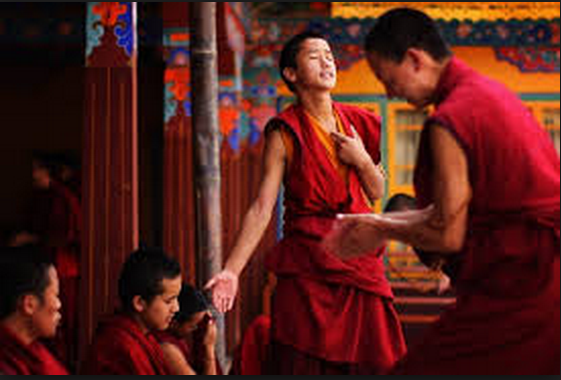Tibetan Buddhism

Tibetan Buddhism.
A common misconception still prevails about Tibetan Buddhism that it is a shamanistic form of Buddhism heavily influenced by the indigenous Bon religion of Tibet. This misconception can be easily reinforced by visiting Tibetan monasteries and seeing all the manner of ferocious, seemingly demonic deities peering at you from the murals and tangkas. But in every culture where Buddhism has spread, from Sri Lanka to Japan, the same phenomenon can be observed: instead of denouncing and stamping out the local gods, the Buddhist have simply converted them to their own cause. People are thus able to continue making use of their traditional religious symbols but within the context of a more highly evolved system of value and meaning.
Buddhism entered Tibet from India in two principal phases. The first phase was during the period of the Yarlung Empire, the Indian figure most associated with this period being Padmasambhava. The second phase was during the eleventh century.Atisha and Milarepa are the best known figures of this time. Although both Tibetan and western scholar like to see the introduction of Buddhism as a systematic and almost deliberate effort, it is more likely that it was the gradual product of centuries cultural and religious influence filtering from India and China into the Tibetan highlands. Only much later was this process simplified and categorized by historians.
Buddhism’s early teachings are based on the insights of the Buddha known in Mahayana tradition as Sakyamuni( Sakya Thukpa in Tibetan ), and form the basis of all further Buddhist thought. Buddhism is not based on any revealed prophecy or divine revelation but rather is firmly rooted in human experience. The later Mahayana school (to which Tibetan Buddhism belongs) diverged from these early teachings in some respects but not in its fundamentals. The Buddha commenced his teaching by explaining that there was a middle way that steered a course between sensual indulgence and ascetic self-torment- a way of moderation rather than renunciation. This philosophical under printing of this path were the four noble truths, which addressed the problems of Karma and rebirth. These basic concept are the kernel of early Buddhist thought.
Recent Posts
Exploring the Beauty of Tibetan Handicraft
The Ultimate Guide to Tibet Tours, Travel, and Trekking Adventures
How to Explore Tibetan Culture
All Categories
- About Tibet
- book a Tibet tour
- Buddhism Practice
- Budget Tour
- China-Tibet Train
- Customized Tibet tour
- Historical Sites
- Hot Springs in Tibet
- News
- Photography in Tibet
- Tibet attraction
- Tibet Group Visa
- Tibet Motorcycle Tour
- Tibet Small Group Tours
- Tibet Tours and Tibetan Tour Guide
- Tibet Train
- Tibet Travel FAQs
- Tibet Travel Information
- Tibet Travel News
- Tibet Travel Permit Update
- Tibet Travel Prices Rises
- Tibet Trek
- Tibet Trekking Tour
- Tibet weather and climate
- Tibet Wildlife animals
- Tibet Winter Tour
- Tibetan Buddhism
- Tibetan Cultural Features
- Tibetan Culture and Poeple
- Tibetan Festivals
- What to see in Tibet



